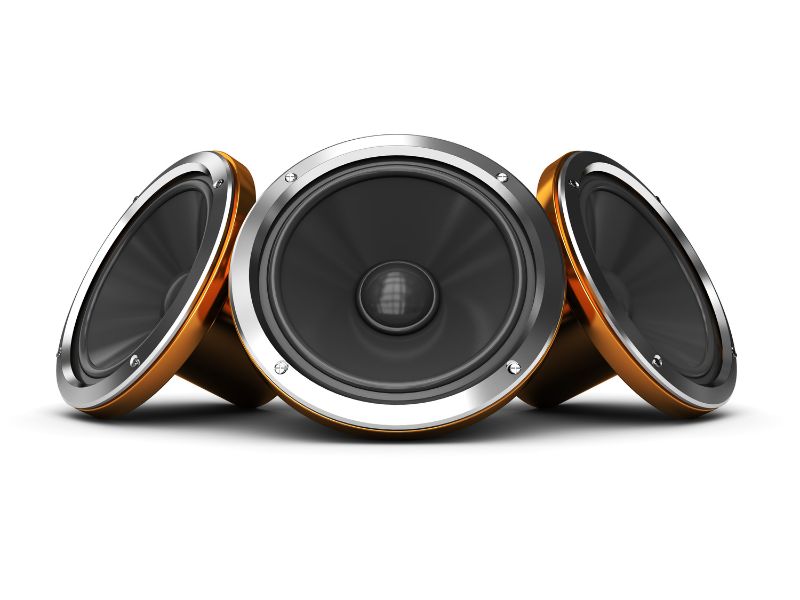AudioReputation is reader-supported. When you buy through links on our site, we may earn an affiliate commission Learn More
A widespread occurrence in the world of audio, it is easy to tell when a speaker is blown, thanks to its characteristic fuzzy and distorted sound. And while distortion might sound good on electric guitars, it does not equal a pleasurable experience when listening to your favorite tunes.
There are many ways to tell if a speaker is blown. Luckily, there are several possibilities to fix the problem as well, and we will go through all of them in our article.
By the way, I’m Ian. I’ve been a music enthusiast and audiophile for more than 10 years, and in this guide, I will help you identify and fix your blown speaker. Let’s get started!
Table of Contents
How Can You Tell If a Speaker Is Blown?
Most blown speakers will have a fuzzy and distorted sound or will make no sound at all. This is the easiest way to tell whether you have a damaged cone.
With that being said, there are other ways to tell if the issue is present as well. Sometimes, for example, a blown speaker won’t make any sound. We will go through all of the possible cases of speaker damage below.

1. The Speaker has a Fuzzy and Distorted Sound
This is one of the most obvious telltale signs of a blown speaker. Most of the time, the audio will sound fuzzy and distorted. It might sound like the speaker cabinet is rattling as well.
As for how obvious this characteristic will be, it will largely depend on each particular case. Sometimes the distortion will be very subtle but still be there, so make sure to pay attention to any changes in the sound characteristics of your speaker.
Keep in mind, though, that a little bit of distortion is normal when playing sound at high volumes in your system. The problem is when your audio is distorted, even at low volumes.
2. The Speaker Makes no Sound At All
Sometimes a blown speaker will make no sound at all. If that’s your case, then chances are it’s blown.
However, this scenario is more difficult since the speaker could be not working for other reasons, so check if your volume is up and your cables are set up properly, for example.
3. There is Physical Damage in the Cone of the Speaker
Make sure to inspect the cone of the speaker for any physical damage. If it is torn or there was water spillage on it, for example, then it’s likely blown and won’t have decent sound quality.
Causes of a Blown Speaker

1. The Audio Signal is too “Hot”
When we say that an audio signal is too “hot”, it means that the power and impedance of its source aren’t equal or compatible with the speakers, therefore creating an electrical signal that is too strong for it to handle.
2. Incompatible Amplifier
Similar to a hot audio signal, an incompatible amplifier will send an electrical signal that is too strong to your speakers and will cause them to blow. That’s why paying attention to specifications such as peak power, and impedance is important if you’re using an external amplifier.
3. A Careless Use of Equalization
An equalizer is able to boost certain frequencies in your audio signal by a certain level. If you use an EQ to amplify your sound far beyond what your speakers can handle, then you risk blowing the cone. It’s always best to play it safe with this tool.
4. Volume Abuse
The louder your audio signal is, the more electrical currency you send to your speakers. Each speaker driver can only handle a certain amount of electricity, so the simple act of turning your volume up might mess with your entire system depending on a few factors, such as peak power and impedance of the components.
How high you can go in terms of volume without causing damage to your speakers will depend on a number of factors. Your best bet to avoid this problem is to make sure your head unit and amplifier’s peak power and impedance match your speaker.
What Do I Do When My Speaker is Blown?

Have your Blown Speakers Fixed or Replaced
First of all, we recommend you get a second opinion from a trustworthy repair shop to confirm if your speaker is, in fact, blown or the problem is actually a different matter, such as faulty wires or a poorly set up audio player.
Once you do confirm that your speakers are blown, the next step is to analyze the severity of the damage and whether or not it can be fixed, and if it is even worth it to have it repaired.
Sometimes a repair might actually be more expensive than buying a new speaker since the components inside these products are rare to find in the market.
If you opt for buying a new speaker, make sure it is compatible with your existing devices, such as the amplifier or head unit, if they’re part of a car audio setup.
Can I Fix a Blown Speaker Myself?
Depending on the severity of the damage, you have a few DIY options to fix a blown speaker. However, you won’t get the best audio quality from it or any long-term reliability, so to speak.
The most common scenario where you can fix a blown speaker in the short term is when the cone is ripped or separated from the ring that encloses your driver.
In that case, you can use silicone rubber gel to glue the cone back together. The elastic properties of this material will allow the cone to vibrate freely while reproducing sound, which is a very important thing.
Silicone rubber gel can be found in any hardware store and shouldn’t be too expensive. Remember that this is a short-term solution and will stop being effective as time goes by. Your best bet is, in fact, to have your blown speakers fixed or replaced.
Check our article on Best Surround Sound Amplifiers For 5.1 & 7.1 Systems.
Bonus: How do I Prevent Blown Speakers?
To prevent the problem, you must ensure that your speakers are compatible with your head unit or amplifier. There are two main specifications we must take into account to verify this: peak power and impedance.

The peak power of a speaker relates to how strong of an electrical signal it can take before distorting and potentially being damaged. Of course, this number must be equal to or higher than the power rating of your head unit and/or amplifier. It is always advisable to keep a bit of headroom, though.
A speaker impedance, commonly stated in Ohms, measures how much power it will draw from your amplifier or head unit. Both devices must have the same number, or the impedance of your amp/head unit must be higher than that of the speakers.
Keep in mind that if you have, for example, an amplifier that is able to supply 50W of power and an impedance of 8 Ohms, you must consider the numbers for all of the speakers. In that case, you could use, for instance, two speakers with 25W of power and an impedance of 4 Ohms each.
By ensuring these two requirements are met, your chances of ending up with blown speakers in the medium term are low.
FAQs
It really depends on each particular case. Sometimes a blown speaker will still play sound, but most certainly, the audio will be distorted and unpleasant. It is possible however for a blown speaker to play no sound at all, but make sure you check your cables if that’s the case.
Yes, most of the time, blown speakers will make a rattling sound, especially when reproducing low frequencies. This is a telltale sign that some component inside it is loose.
There is no way to pinpoint an exact value on how much it will cost you to fix your blown speakers. Depending on the model of your speakers, the complexity of your sound system, and the severity of the damage, service could run from a few to a couple of hundred dollars.
Conclusion
Now that you know how to tell if a speaker is blown and needs fixing, make sure to consider all of the possible scenarios we discussed in the article before buying a replacement or taking it to a repair shop.
As we said, sometimes the issue might not be a blown speaker but actually faulty or improperly connected wires, for example.
Do consider that blown speakers may have one or more different characteristics. For example, some blown drivers will reproduce a distorted sound, while others won’t even work at all.
If you discarded all of these possibilities and found out that your speakers are, in fact, blown, take them to a trustworthy repair place if you don’t have the experience to replace them yourself.
We hope this article was helpful. Share it with a friend, and feel free to contact us if you have any questions!

Hello, I’m Ian.
I’m a music producer, musician, and writer for the AudioReputation website. I’ve been involved with making music and the processes revolving around audio technology for longer than I can recall, so I find it amusing to share my knowledge with fellow enthusiasts worldwide when I’m not working with artists or creating new songs.
Along my path as a music maker, I discovered the ability to write informative content, and I decided to embrace it. I’ve written for a few websites about audio and music, including a digital magazine.
I’m particularly passionate about any sort of audio gear: guitar pedals, amplifiers, headphones, and even home speakers. That makes it really joyful for me to review any product related to the subject and give my honest opinion about them. I also frequently write tips and guides for consumer and professional-grade audio.
